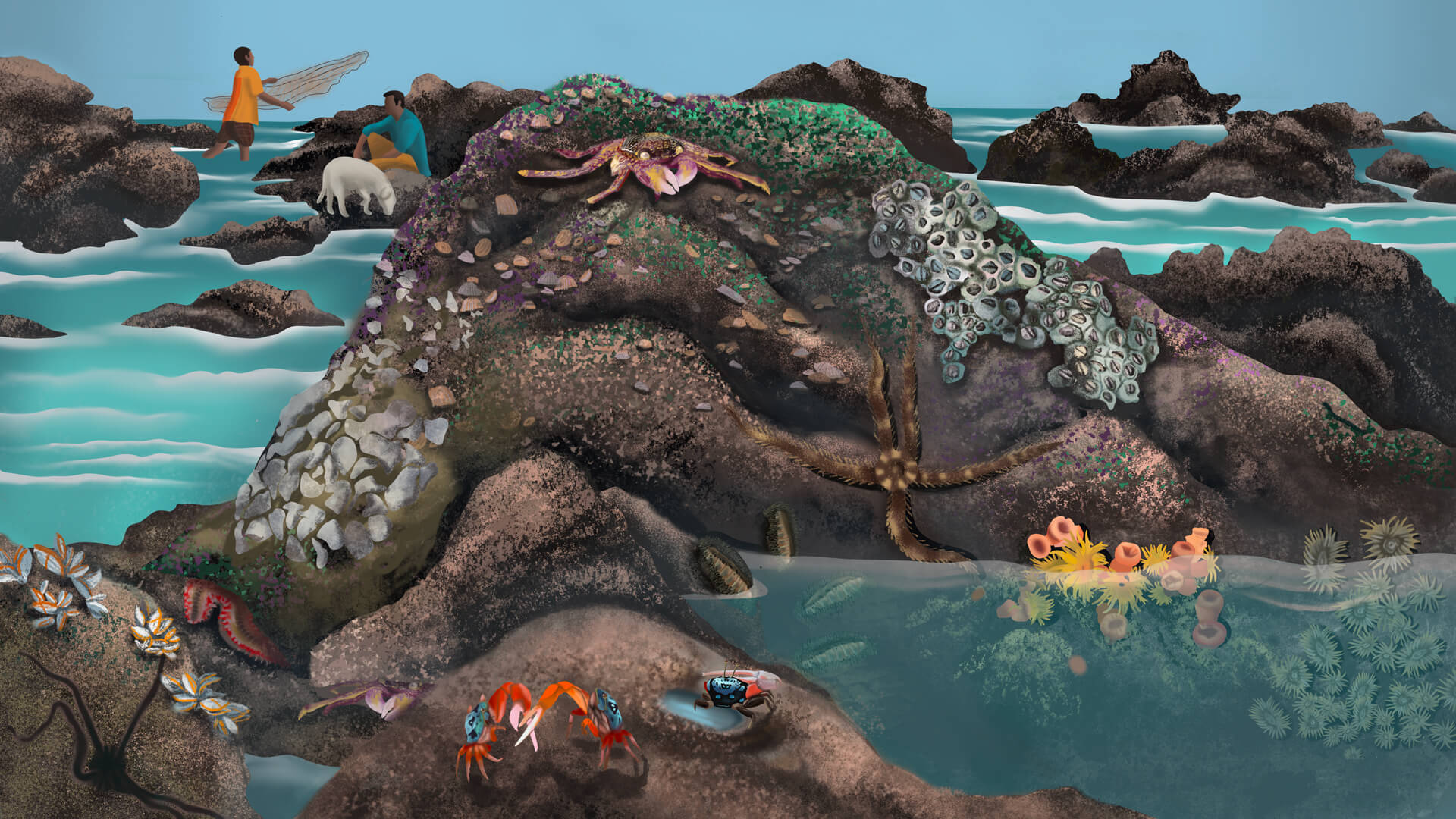Intertidal zones are the regions of the coast that are submerged during high tide but exposed during low tide. They are highly dynamic environments, experiencing significant temperature and salinity changes throughout the day, going through two tidal cycles approximately every 24 hours. The intertidal can be rocky or sandy in terms of substrate, and is divided into four zones based on the amount of exposure it gets - low, middle, high and spray zone. Species that inhabit this region are highly specialized in holding moisture for extended periods of time so that they do not dry out during low tide. The rocky intertidal zone has a high number of crevices and holes where water and sediment get collected (tide pools) providing an ideal environment for species of echinoderms, clams, and sand dollars to reside in.

Sea stars, snails, seaweed, algae, crabs, barnacles, mussels, and more.
The intertidal zone is an important natural barrier to the action of tides and storm surges, while also providing protection from erosion. This ecosystem experiences extreme changes but is quite delicate, and the species found here are sensitive to changes that are not normal, making the intertidal zone a potential indicator of climate change-induced disruptions in patterns. These changes can include spikes in temperature, fluctuating tide levels due to rising sea levels, and disturbances and destruction due to development activities and pollution.